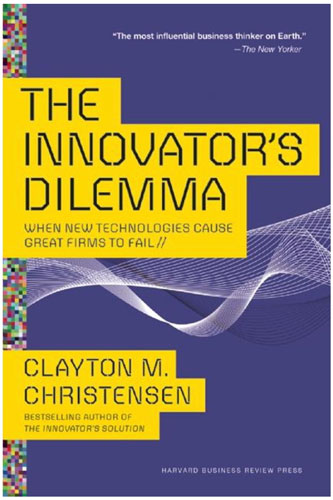Has anyone noticed the apocalypse?
The UK’s housing associations can learn valuable lessons from the demise of North America’s steel industry

GROWTH & REGENERATION
Image: Istock

Ian McDermott
Chief Executive, Catalyst Housing Group
I once had the honour of being taught by the late, great Clay Christensen. He was a Harvard professor who published nine books, including The Innovator’s Dilemma, which was voted one of the top management books of all time. Throughout his academic life he was fascinated by two subjects: first, why success was so difficult to sustain and second how really smart people, despite often historic success, go on to oversee the demise of once great companies.
In his research he identified a clear pattern, which could explain the demise of tech companies, motor manufacturers and hi-fi producers. But the example that stuck with me was that of the steel industry in North America. I believe that his patterns could foretell what might be a difficult period for housing associations.
Steel story
So first, let me repeat Clay’s story. In the 1970s the steel industry was dominated by integrated mills. These were blast furnaces with huge set-up costs and therefore significant barriers to entry. They enjoyed a monopoly and apparently held an unassailable position. Steel was manufactured at five levels of quality. At the lowest were reinforcement bars (rebars), then angle iron, all the way up through structural steel to the highest-quality sheet steel.
In the late 1960s mini-mills, small-scale electric mills, emerged as the technology became viable, but they were only able to make the lowest-quality, melting scrap metal to make rebars. The technology was poor and the quality of the product low, though they were 20% cheaper than the established competitors.
As Clay describes it, the response of the larger integrated mills was “let them take the rebar market – we’re glad to get out of it with its low 7% margin and dog-eat-dog environment, it allows us to focus on higher grade, higher margin products. We can make 12% on angle iron”. So, they withdrew and increased their margins. The mini-mills were making money producing rebars for 20% cheaper, so everyone was happy.
Then in 1979, when the mini-mills finally succeeded in forcing the big integrated mills out of the rebar market, the price dropped by 20%. No one had spotted that in order for a low-cost strategy to work you need to have a higher-cost competitor. Without the integrated mills, the market corrected itself and, while the mini-mills tried to reduce costs, this was just a recipe for survival.
History repeating
So, the mini-mills with their improving technology eyed the angle iron market enviously and a similar pattern repeated itself. The response of the larger integrated mills was “let them take the angle iron market – we’re glad to get out of that with its low 12% margin and dog-eat-dog environment, it allows us to focus on higher-grade, higher-margin products. We can make 18% on structural steel”. So, they withdrew and increased profit margins. In 1984 the mini-mills finally succeeded and drove the last high-cost integrated player out of the angle iron market and the price dropped by 20%. As the technology continued to improve, the pattern repeated.
At the turn of the century, the mini-mills accounted for about 65% of North America’s steel production and all but one of the integrated steel companies had gone bankrupt. Clay explained the concept of disruptors entering markets at the low end with poor-quality products and rising through the quality chain. Toyota, Sony and Intel all followed this pattern of disruption, putting their established competitors in the shadows, if not out of business. More recently he described how these disruptors are in turn falling victim to the new disruptors.
Lessons for housing
So why is this of any relevance to our world? The rise of the bigger developing commercial registered providers has attracted some comment, but actually very little in the way of concern. The business model is fundamentally simpler. Their job is to find homes for apparently large amounts of cash, with the aim of securing good, if not spectacular returns, and without the complexity of raising money independently. EBITDA-MRI covenants and the like do not trouble them. But they are still tiny players dealing almost exclusively (at the moment) in bidding for Section 106 properties. Why not let them take the Section 106 market? Wouldn’t we be glad to get out of that with its low margins and dog-eat-dog environment, allowing us to focus on higher-grade, land-led developments – sound familiar?
The for-profit associations don’t have the same legacy issues as housing associations. They don’t have the fire safety costs to account for and their zero-carbon bill will be proportionately much smaller. Coming up is the bidding round for funds from the Greater London Authority and Homes England. Should we be concerned?
“The rise of the bigger developing commercial registered providers has attracted some comment, but actually very little in the way of concern.”
‘Zombie associations?’
Imagine a situation in which housing associations focused internally on customer service and repairing historic inadequacies, be that carbon consumption or fire safety, and allowed the for-profit organisations to dominate the development market. We would soon find ourselves in a position where we became less and less relevant. Imagine a situation in which what some people have unkindly called ‘zombie associations’, doing nothing other than management and marginal development, are pushed to one side. I guess we could always fall back on the fact that we are beloved by government and this will protect us (!)
I don’t believe this is how events will unfold. However, the risks are there, and they are real. As we focus, correctly, on the internal issues of service delivery, zero-carbon and fire safety, we cannot allow ourselves to become collectively irrelevant in terms of supply. To do so would leave the sector vulnerable to a hostile government.
So at Catalyst, while we are trimming back our development aspirations from 1,300 to 1,000 homes a year, we are very aware that the cumulative impact of similar actions carries with it very real risks for our sector. Innovation is an important aspect of ensuring we continue to deliver for our customers. Thanks to Clay Christensen we are well aware of the associated dilemmas.



